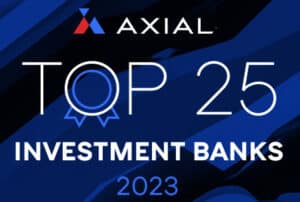
Striking the Balance: Key Negotiation Points in Today’s Agreements
The M&A landscape is always transforming. Letters of Intent (LOIs) have evolved from brief outlines of deal terms to detailed blueprints, setting the stage for negotiations long before the purchase agreement is drafted.
This shift reflects a drive for transparency and risk management, but it comes with a caveat: nuance is critical. Over-negotiating every detail early can lead to deal fatigue, raising red flags for both buyers and sellers that the process may be fraught with challenges.
To avoid this, focus on key terms upfront while reserving finer points for later stages. An experienced M&A attorney who understands this balance—protecting your interests while keeping the deal on track—is essential. With many skilled attorneys available, choosing one who prioritizes progress alongside advocacy is critical.
Drawing from trends in my active transactions, here are the most prevalent negotiation points—beyond price—shaping deals.
1. Holdback Dollars and Release Timing
Holdbacks, where a portion of the purchase price is withheld to cover potential post-closing issues, are a focal point. Buyers often push for 10-15% of the price to mitigate risks like undisclosed liabilities; sellers negotiate for lower percentages and faster release schedules. Typical buyer schedules call for 12-18 months for a release; we like to ask for shorter durations and releases in tranches at 3- or 6-month intervals. Triggers for releasing the funds, such as resolving specific contingencies, are crucial, but overloading these terms early can bog down talks – you may be better served saving some of this for the purchase agreement.
2. Exclusivity Extensions with Accountability Pegs
Exclusivity periods, where sellers agree not to shop the deal elsewhere, are increasingly structured. Buyers like a blanket period such as 90 or 120 days to complete diligence, negotiate the purchase agreement and close. I’ve seen and helped sellers negotiate extensions tied to milestones, like completing due diligence, a draft of the purchase agreement and securing financing, to ensure progress before agreeing to further extensions.
3. Announcement vs. Close Date
The timing between a deal’s public announcement and its closing is critical for managing stakeholder expectations, employee morale, and market perceptions. Sellers often prefer a shorter gap aiming for a simultaneous sign and close, while buyers prefer more time, generally to line up operations team to help with the transition; agreeing to timelines early sets a solid foundation.
4. Seller Note Terms
When seller financing is involved, the note’s structure is heavily debated. Key points include the amortization period (typically 5-7 years), interest rate, standstill provisions (no payments until the amortization is completed), and balloon payment schedules. Sellers should seek protections, like collateral or personal guarantees, to soften default risks
5. Non-Compete Clauses
Non-compete agreements prevent sellers from launching competing ventures post-sale. Negotiations focus on duration (often 2-5 years), geographic scope (local vs. national), and restricted activities (e.g., customer solicitation or specific industries, or carving out other similar activities seller is engaged in). Some agreements restrict sellers in participating in any capacity in an entire industry, while others simply restrict competing within an agreed radius from the existing business.
6. Additional Negotiation Hotspots
Other critical terms I’m coming across on these transactions include:
Earnout Provisions: additional value and payments based on how the business performs after the sale (e.g. hitting revenue or profit goals). You’ll need to agree on what’s measured, how long it lasts and how the payments work.
Tax Structuring: Optimizing asset vs. stock sale structures to minimize tax burdens.
Representations and Warranties promises about your business’s health (like accurate financial or legal issues). Negotiations focus on limits to your liability and for how long. Fraud, or willful misconduct does not apply in these scenarios.
Indemnification Terms: Stipulations for who is financially liable if something goes wrong, like a lawsuit or a contract breach.
The trend toward detailed LOIs and early negotiations underscores the need for clarity, but overdoing it risks derailing deals before they gain traction. Holding some terms for the purchase agreement, is critical to avoiding fatigue and fostering collaboration. By focusing on strategic terms and leveraging expert counsel, buyers and sellers can navigate this evolving terrain to close deals efficiently and effectively.














